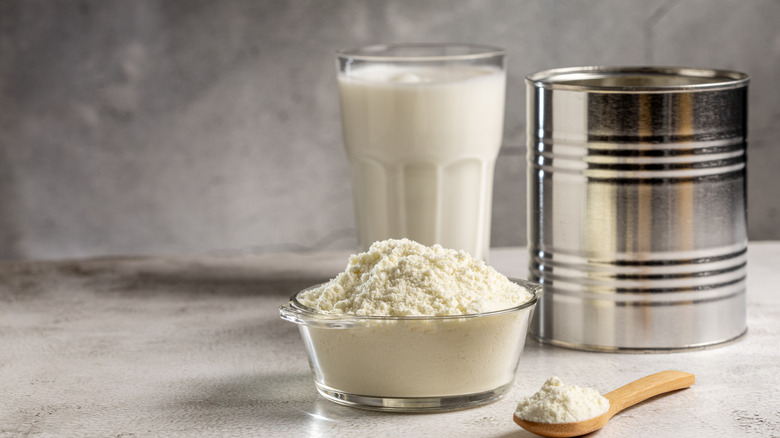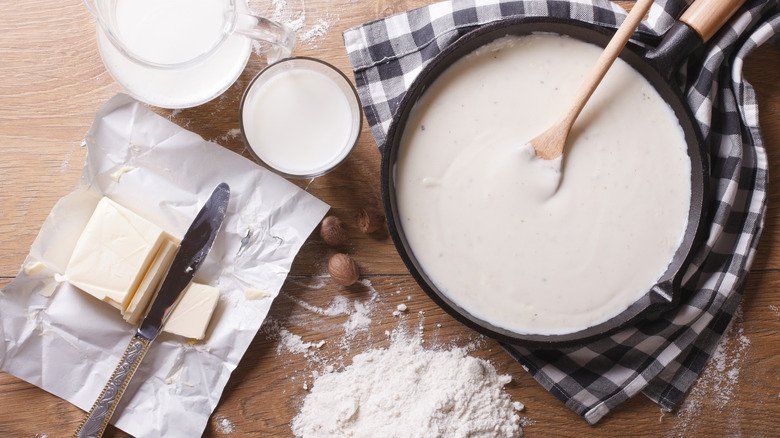Powdered Milk Should Be A Pantry Staple In Your Kitchen. Here's Why
The toasty, caramelized sweetness of powdered milk is hard to ignore. While bakers know the kind of richness it can lend to certain desserts, few realize just how much of a multitasker it really is. Developed in the early 1800s as a way to preserve fresh milk, powdered milk is essentially dehydrated milk. That gives it a shelf life that can stretch for years. Which is why it deserves to be a pantry staple, though the vampire-like span isn't the only reason to keep it around.
Powdered milk can be used in countless ways to add a creamy texture to desserts. It can help you bake the creamiest cakes and make your store-bought cookie dough taste homemade, sure, but its talents don't stop at sweets. It can just as easily give your brioche that cloud-like lift, especially high-heat non-fat milk powder, as it has more protein than regular milk powder. "Milk powder has an amazing way of adding a terrific baseline flavor ... it's the sort of 'secret weapon ingredient' that doesn't taste like anything special straight out of the container, but works magic when it's included in a recipe," Chef Christina Tosi, author of "Momofuku Milk Bar," told Epicurious.
Powdered milk is the secret to creamier sauces and soups
Powdered milk works especially well in recipes where you want more body without the added heaviness. You can use either regular or toasted milk powder for the purpose. The difference between the two is that while regular milk powder is subtle and sweet, toasted milk powder carries that roasted, nutty undertone, almost like brown butter. In fact, powdered milk is the unexpected ingredient that can take your brown butter to the next level by making it more potent.
Depending on what you're making, you can swap one for the other. Toasted milk powder works well in baked goods, while regular milk powder is better off as a thickener. For instance, if you're struggling to get that silky, clinging texture in a béchamel or even a cheese sauce, a spoonful or two of regular milk powder is all it takes to build the consistency you're after.
The same hack can be applied to soups or broths, saving you from waiting around for potatoes to break down. And because powdered milk dissolves so easily, you don't have to worry about lumps or that floury aftertaste that can come with other thickeners. In short, it's the kind of ingredient that pulls its weight in both savory cooking and sweets, and if we haven't stressed it enough, the extra-long shelf life only makes the case stronger.

